Trieu Minh Hiep bakery has been passed down through 3 generations, preserving the traditional handmade way of making Pia cakes of the Chinese people of Teochew origin.
On the occasion of the full moon of August, Chinese people of Teochew origin in Ho Chi Minh City often give each other boxes of crispy pia cakes with green bean, taro, and salted egg fillings. Mr. Trieu An, owner of Trieu Minh Hiep pia cake shop in District 6, said that there are not many shops making handmade pia cakes in Ho Chi Minh City. This type of cake has been associated with the lives of Teochew people for many generations, and is indispensable in weddings and Tet holidays. "Pia" comes from the Teochew language (dialect of the Chaoshan region, Guangdong, China) meaning "cake" .
Mr. An said that Pia cakes are not as popular as Cantonese-style moon cakes commonly seen in the market. Almost only Teochew people use Pia cakes during the Mid-Autumn Festival.
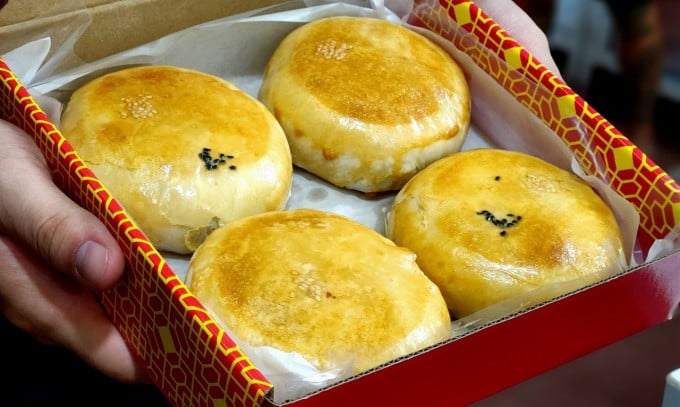
Traditional Teochew mooncake boxes are often given as gifts during the Mid-Autumn Festival.
Pia cake was introduced to Southern Vietnam in the 17th century by the Ming Huong people (people of the Ming Dynasty, China) who immigrated to Vietnam. To this day, the Chinese people of Chaozhou origin in Ho Chi Minh City still preserve the traditional Pia cake. Mr. An's bakery is now in its third generation. The steps of mixing, rolling the dough, making the filling, and shaping are all done by hand. The cake can only be used within 10 days, "it tastes best when it is still hot right out of the oven," said Mr. An.
In the 1930s, Mr. Trieu Minh Hiep, Mr. An's grandfather, immigrated to Vietnam and started a business in Cho Lon, now the area of Districts 5, 6, and 11 of Ho Chi Minh City. In the early days, the Trieu family's "business" was just a stall selling grilled pia cakes in the market. In 1948, Mr. Hiep opened a small bakery in an alley on Binh Tay Street, District 6. After 75 years, through three generations of management, the bakery has never changed location. The way of making cakes is still "the same as the first day", Mr. An said.
The cake making process is divided into two parts: making the crust and the filling. The cake filling consists of green beans and fresh taro, without flour. These ingredients are steamed, pureed, then mixed with sugar (this step is also called cooking the cake filling) on the stove for about two hours until it sticks together into a soft, elastic mass. The cake filling after cooking is shaped into a round mass, covered with salted eggs. The shop owner said that the salted eggs used in the cake are fresh, customers will find it loose, spongy, not hard and firm like the type that uses preservatives.
While waiting for the filling to cool, the baker will mix flour to make the crust, let the dough rest for about 15 minutes, then roll it out and shape the cake. Mr. An’s family does not use a mold, but molds the cake by hand into a flat round shape, without the eye-catching patterns of the usual molded mooncakes. Mr. An said that the filling is not mixed with flour, so the texture is soft, and shaping it with a mold will cause the cake to crumble, and the crust and filling will be mixed together.
After shaping, the cake is put into the oven for about 30-45 minutes, when it comes out of the oven, it will be brushed with a layer of lard to make the crust golden. The lard comes into contact with the hot cake surface, creating a characteristic fatty, slightly burnt smell, which can be clearly smelled upon entering the shop. The unique feature of Mr. An's bakery is that the cake is delivered to customers while it is still hot.
"Pia cakes can be eaten hot or cold, but nowhere else delivers cakes as hot as my house. The cakes are delivered while still smelling of baking, and when holding the box, they still feel hot. Customers will feel the freshness and handmade quality, completely different from neatly packaged industrial cakes," said Mr. An.
The bakery's distinguishing feature is also the box. While other mooncake brands on the market are competing to make their boxes more beautiful, Mr. An's bakery has used simple paper boxes for many years. For decades, the boxes the bakery used were hand-folded, printed in colorful colors. Last year, the box factory closed because the workers were all seniors who had reached retirement age, so the bakery changed the boxes. They are still paper boxes, but the industrially printed patterns are "not as sophisticated" as the old ones. According to the shop owner, paper boxes must be used to absorb moisture and preserve hot cakes. Using other types can easily cause the cakes to steam and the crust to lose its crispiness.
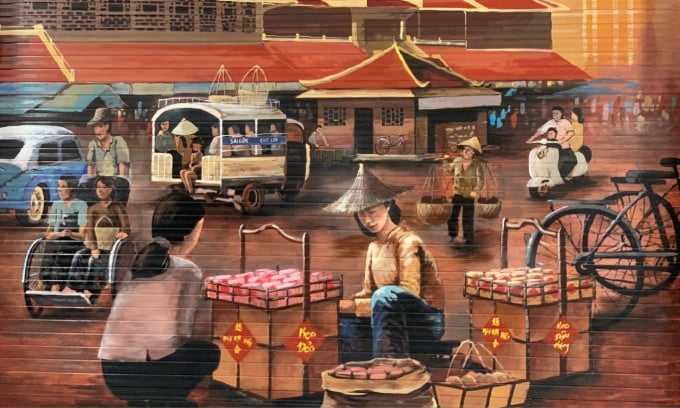
The mural on the wall depicts the first "business" of Mr. Trieu Minh Hiep's family, a Pia cake stall selling in Cho Lon.
The bakery owner said it takes 3 hours to make a batch of 30-40 cakes. On a normal day, Mr. An's shop sells about 30-40 boxes. A box contains 4 cakes, priced from 219,000 VND to 279,000 VND depending on the type.
A month before the Mid-Autumn Festival, the number of customers increased 3-4 times, with the shop selling more than 100 boxes each day. Customers who come to buy often order in advance and are scheduled to pick up the cakes on time, ensuring the cakes are fresh. "Many individual customers come suddenly and have to wait for the cakes to be baked or pick them up the next day, because the cakes are produced in small quantities and are sold out each day. During this Mid-Autumn Festival, the bakers work hard but many days there are not enough cakes to sell," said Mr. Trieu An.
Mr. Minh Hieu, who lives in District 5, said that his house is near a bakery, so he took advantage of the time after work to go over and buy 1-2 boxes without ordering in advance. The bakery ran out of bread, so he made an appointment to come back at 9-10am the next day. Mr. Hieu said it was "not surprising" because "I've bought here ten times without ordering in advance, and 7-8 times the bread ran out or I had to wait to bake it."
"The cakes are hard to buy in advance, but the quality is very fresh. During the Mid-Autumn Festival, I often buy pia cakes here because they are not as sweet as regular baked cakes, the crust is crispy, and they are not greasy to eat," said Mr. Hieu.
The shop owner said the number of customers has been increasing steadily, not only from the Teochew community but also from all over the world. However, the shop has no plans to expand its branches, only passing them on to family members because they do not want "the business that their ancestors have built for years to fall into the hands of outsiders, ruining its reputation".
Mr. An said he would rather sell less and make less profit than sacrifice quality for immediate revenue. The shop has been operated by a family tradition, using family prestige, quality cakes, and attentive service as its business philosophy to retain customers for the past 75 years.
Article and photos: Bich Phuong
Source link





![[Photo] Looking back at the impressive moments of the Vietnamese rescue team in Myanmar](https://vstatic.vietnam.vn/vietnam/resource/IMAGE/2025/4/11/5623ca902a934e19b604c718265249d0)
![[Photo] "Beauties" participate in the parade rehearsal at Bien Hoa airport](https://vstatic.vietnam.vn/vietnam/resource/IMAGE/2025/4/11/155502af3384431e918de0e2e585d13a)



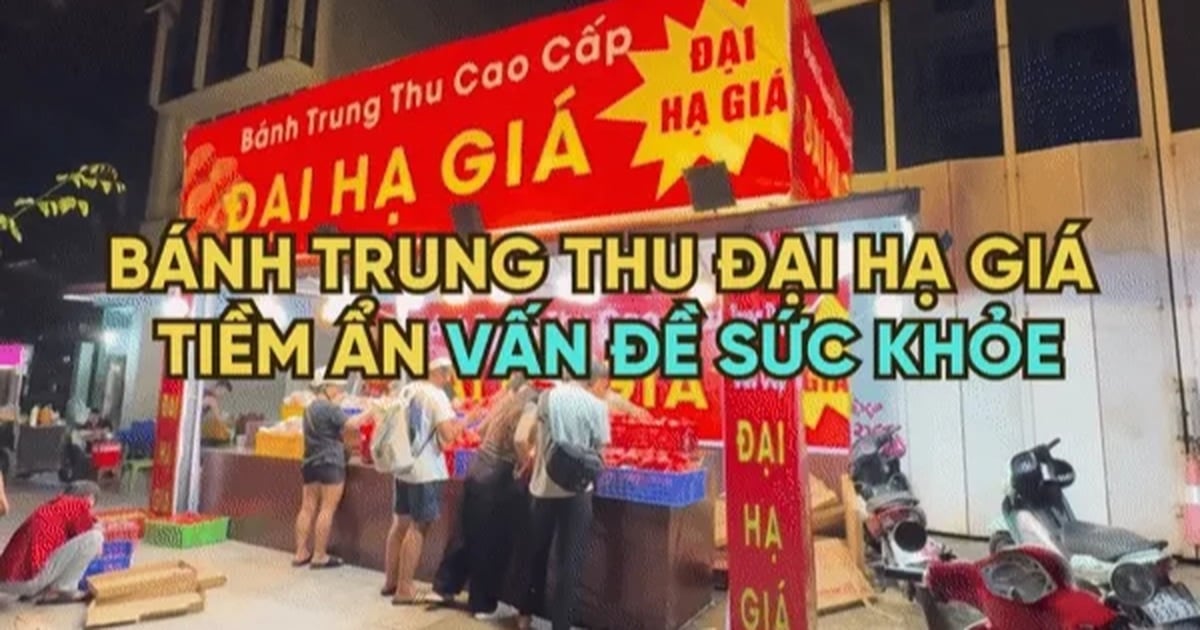



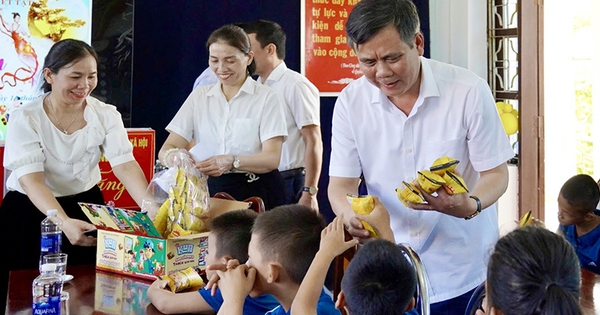

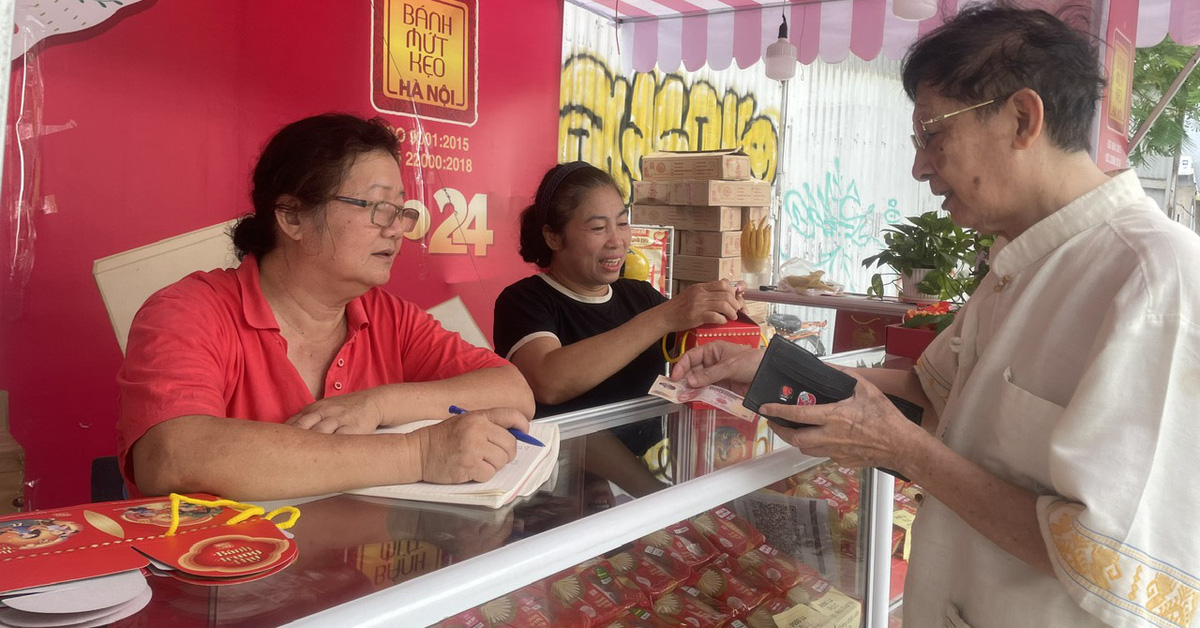

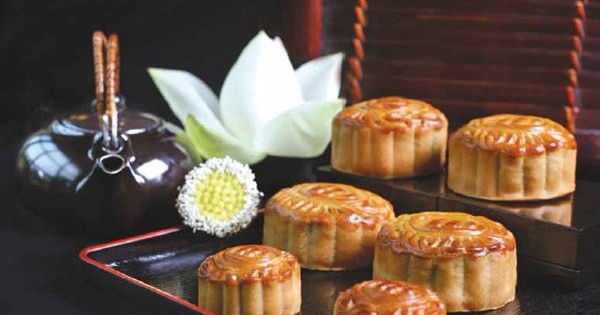
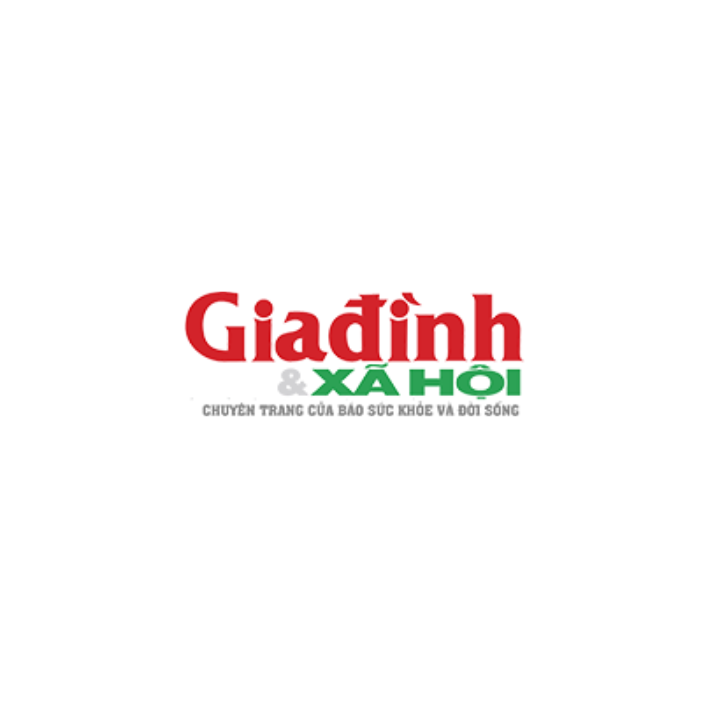


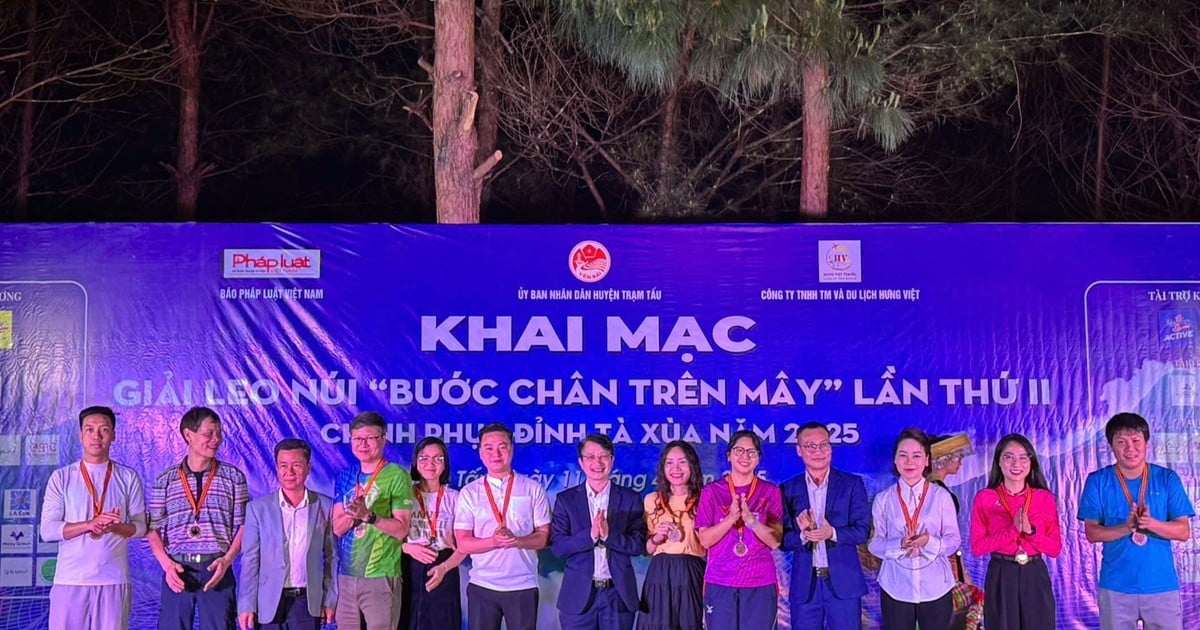












![[Photo] Summary of parade practice in preparation for the April 30th celebration](https://vstatic.vietnam.vn/vietnam/resource/IMAGE/2025/4/11/78cfee0f2cc045b387ff1a4362b5950f)








































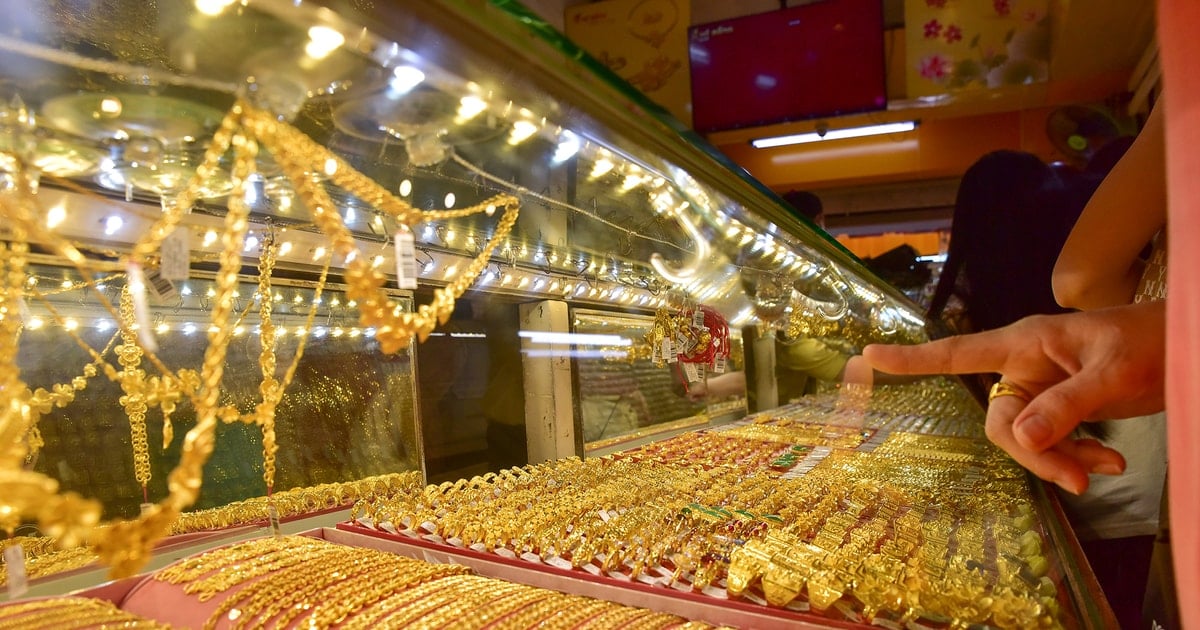
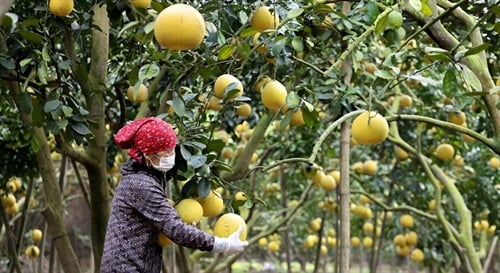














Comment (0)